I asked for Monday, October 7, off from work to join my buddies Tom, Rook and Cori up on Mount Pinos to enjoy the night sky and to play around with the Canon 5D. Mount Pinos is about an hour northwest of the edge of the Los Angeles metro area, west of Frazier Park. A large parking area is available to set up telescopes and equipment, at an elevation of about 8300 feet (about 500 feet below the peak). The towns near I-5 to the east are tiny and about 20 miles distant, so there is little light pollution from those. Los Angeles and Bakersfield, though more than 50 miles distant, are big and bright enough to cause an annoying dim glow high above the tree-lined horizons. Still, the sky was plenty dark, the weather was still and perfectly clear, and the summer Milky Way was bright and fabulous.
We arrived a little after sunset to set up, and waited for the overhead passage of the International Space Station (ISS). Tom said that it was scheduled to be visible around 7:45 p.m. I was using my new Zeiss 15mm lens for the first time, and I took some practice shots of the Milky Way a little prior to the ISS passage to make sure the exposure would be right. I settled on ISO 1600, f2.8, 30 sec. The camera was on a regular tripod, so there would be some very slight star trails. A minute or so after 7:45 p.m. the ISS was visible to the west. It headed to the east, right to left, almost directly overhead and in front of the Milky Way. It was nearly as bright as Venus, I would estimate, and was visible for nearly three minutes. I kept the camera pointed in the same position, a little south of directly overhead, and here are the five 30-second exposures:
and a cropped version of the middle shot:
a couple of long exposures,
and a couple of long exposures with the camera “piggy-backed” on the Celestron, while tracking:
All of the images here were shot with the Zeiss 15mm 2.8 Distagon lens. The “field of view” is a whopping 110 degrees (diagonal).

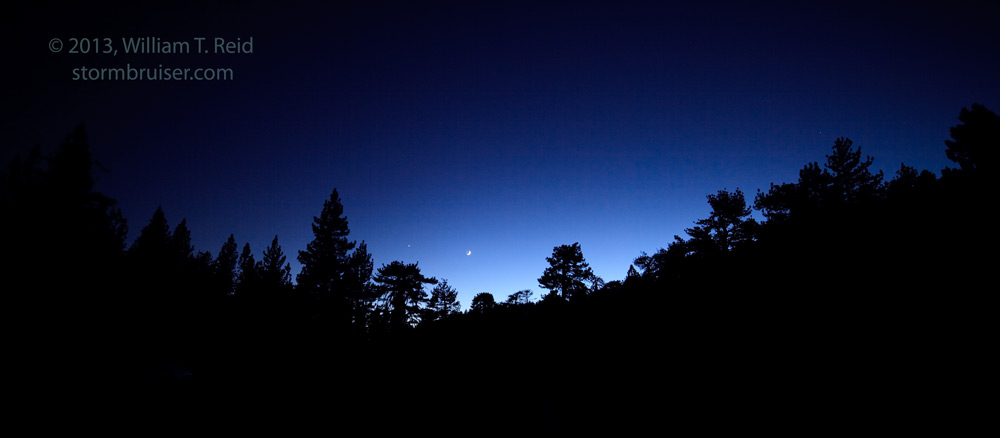
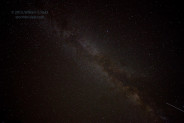
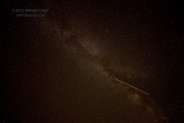
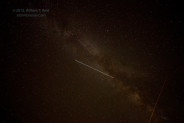
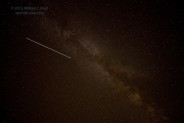
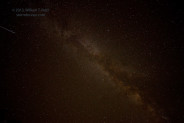
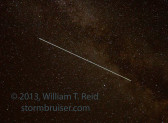
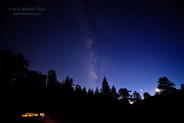

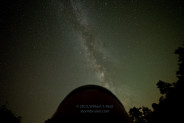
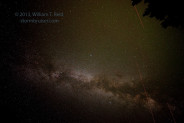
Leave a Reply
You must be logged in to post a comment.